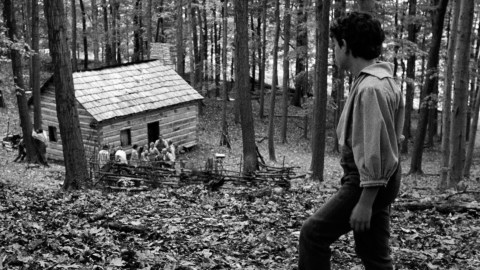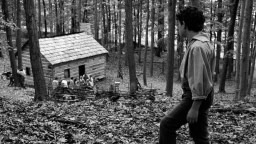The Merits of Black and White Cinema, with Director A.J. Edwards

A.J. Edwards is the director of the new film The Better Angels, which highlights the formative years of Abraham Lincoln. A protégé of the visionary filmmaker Terrence Malick, Edwards’ work is similarly steeped in a bold aesthetic emphasized by beautiful, sweeping cinematography. In the following clip from his Big Think interview, Edwards discusses this aesthetic and explains his decision to shoot the film in black and white:
"The Better Angels was conceived in black and white from the very beginning. It was just the way that I felt Lincoln existed. Lincoln lives in black and white and I didn’t want to see him in color."
Not only did Edwards feel black and white was an aesthetic imperative, he knew it would remove "the romance" from Lincoln's frontier upbringing. America's historical perspective of the era is highlighted with nostalgic sentimentality. A lot of that sentimentality draws from a bevy of cultural clichés: coonskin caps, muskets, log cabins, etc. Edwards didn't want to film Frontierland from Disneyland. He hungered for something more stark, austere, and honest. Black and white helped him achieve that.
Edwards explains that there are many additional benefits and stigmas attached to filming in black and white. He explains how the form offers a unique sensory experience dwelling in a world of abstraction:
"With color the image is much busier. There’s much more to take in. There’s more specificity to it. Black and white immediately abstracts things and makes symbols out of it so that 'man' or 'woman' suddenly isn’t as specific... It gives you a generality in the best way."
Other reasons Edwards enjoys shooting in black and white include how vividly the format evokes the past and the unity it provides for a film's art department. On the other side of the coin though, he explains the challenges implicit with black and white cinema, particularly when it comes to selling a film to producers and audiences:
"Black and white has a stigma that’s attached to it. People view it as a disadvantage in that you’re limiting your audience, your financial prospects and categorizing your picture as something that it may not be. You know if you shoot black and white people immediately think art or they immediately think serious. And so if someone is to consider black and white for their project I guess I would say the heads up that I would offer is that they need to be prepared to fight for it and lobby for that."
Then again, he says, Schindler's List made over $320 million. The Artist won best picture. Black and white won't raise or sink any particular film. In the end, performance and story will win out.
"And so if the story’s there, the performances are there it will connect people. And connections are not in color or in black and white. They’re invisible but just as real."
The Better Angelshit theatres this month in a limited release and, looking forward, Edwards appears to have a bright future ahead of him (especially if recent Star Wars rumors are to be believed). You can watch the trailer for The Better Angels below:





